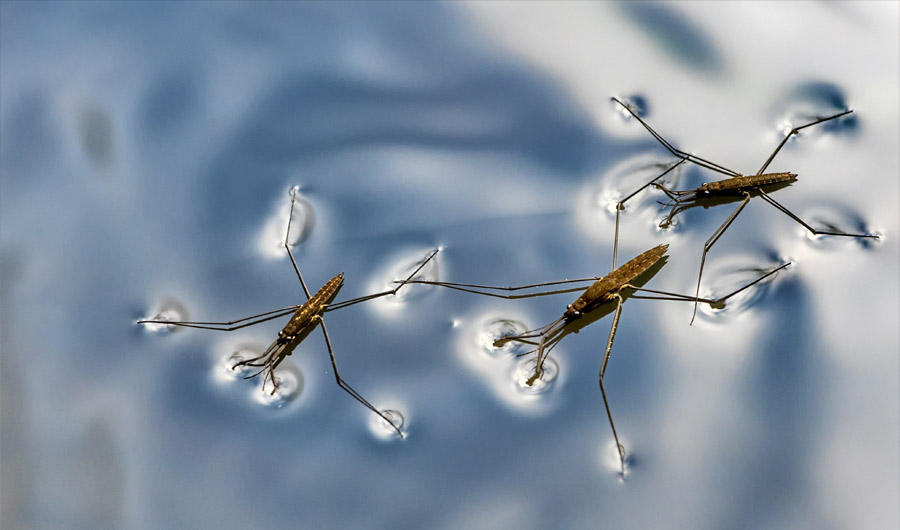Inspired by Insects, Tiny 'Robots' Walk on Water

Scientists were inspired by water strider insects to design tiny "robots" made of gel that can move on water without external power.
(Inside Science) -- Inspired by the insects known as water striders, scientists have made disks of hydrogel that can move themselves around the surface of a body of water by using tiny differences in its surface tension.
The disks, made from a gel that contains both water-attracting and water-repelling chemicals, propelled themselves by exploiting what's known as the Marangoni effect.
The Marangoni effect is how liquid flows from areas of low surface tension to areas of high surface tension. It is named after the 19th-century Italian physicist Carlo Marangoni and can be seen in the "legs" or "tears" on a glass of wine.
When a drinker swirls or sips a glass of wine, a thin layer of liquid coats the sides. In that layer, the alcohol evaporates more quickly than the water does, giving the liquid in the layer a higher surface tension than that of the wine in the bottom of the glass. As the layer is pulled up the sides of the glass, it collects in droplets that grow big enough to eventually fall back down as visible streaks.
To learn how water striders use the Marangoni effect for propulsion, researchers led by materials scientist Yongfeng Mei from Fudan University in Shanghai collected the insects from nearby ponds.
The bugs have long legs, covered with tiny hairs that shed water, that they use to create precisely shaped dimples on the water's surface. Different parts of the dimples have different surface tensions, and the insects can harness these differences to skim over the surface at relatively high speeds.
The researchers then used hydrogel disks about an inch across to mimic the locomotion of the water striders. They eventually designed disks that moved when the lowest layers absorbed water and began to sink, momentarily wetting their dry upper sides and creating gradients of surface tension within the hydrogel.
The researchers could control the movement of the disks by adding different chemicals to the water's surface, and by 3D-printing the "robots" in different shapes such as flowers and stars.
The team suggests the technology could one day be used in soft robots that might gather pollutants on a water surface -- such as oil during a spill -- without needing fuel or electricity.
Studying the behavior of the hydrogel disks could also lead to a better understanding of water striders, which can move at very high speeds on the water’s surface -- often dozens of times their body length in a fraction of a second. The researchers published their findings today in the journal Science Robotics.
